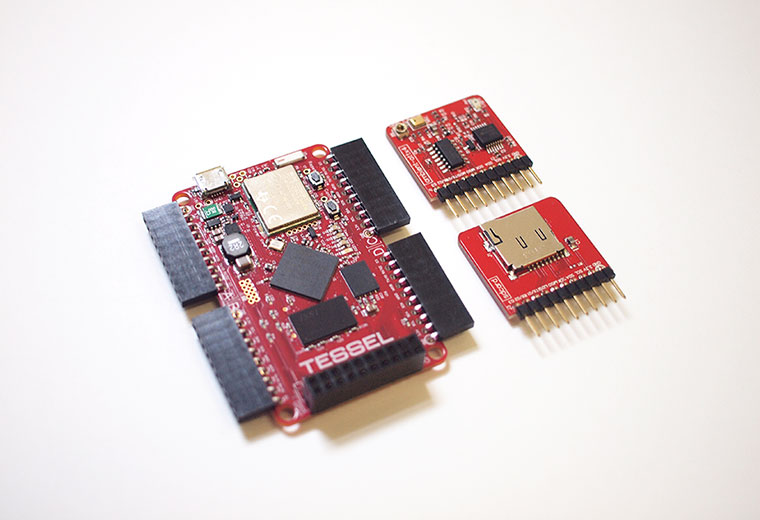Tessel – First Impressions
A Tessel?
While doing some research on the Espruino, I found out that the team at Tessel had fulfilled all their pre-orders and had opened up ordering to the general public. I immediately ordered a Tessel along with a few modules – ambient, climate and sd to be precise.
For those of you who don’t know what a Tessel is, let me quote the Tessel website:
Tessel is a microcontroller that runs JavaScript.
It’s Node-compatible and ships with Wifi built in.
Use it to easily make physical devices that connect to the web.
Awesome, right? For me, it means that the often disparate disciplines of web development and physical computing can meet in the middle on the Tessel.
From Point A to Point B
Shipping was lightning fast. Though a message on the site stated “Orders placed today estimated to ship 1 week from today.”, I received everything except the climate module, which isn’t supposed to ship until July 11, less than 24 hours after placing my order. As you can imagine, I was excited to get my hands on the Tessel and start hacking.
The Goods
The main board and modules arrived in their own anti-static bags along with a micro USB cable and a couple of Tessel stickers. When you’re launching a new product, a bit of swag is always a nice touch. The build quality of the boards is excellent. The solder joints are bright and clean. The headers and peripherals are flush and true.

Tessel with Ambient and SD Modules
Up and Running
Getting the Tessel up and running couldn’t be much easier. That’s especially true if you’re a part of the target demographic, web developers, because you probably already have NodeJS installed. If you don’t, installing Node these days is a cinch. Long gone are the days of having to compile from binaries. Unless, of course, you’re on Linux. But, then again, don’t you guys compile everything from source?
I digress…
Anyhow, once Node’s installed, you can easily install the Tessel cli by running npm install tessel -g then update the firmware to the latest version by running tessel update. All of this information along with the classic “Hello World” of hardware hackers (i.e. a blinking led) is conveniently located here.
SOS
I went quickly from blinking an led to trying to run the NodeJS simplae server example in anticipation of porting over the web based control interface for the Athlete 1 Rover from the Arduino Yún.
As can be expected with a new platform, I ran into some issues. What really sets one platform apart from another is the quality of its support both from its creators and the community. The Tessel team is quick to answer support emails and respond to threads on the forum. There’s also early evidence of a self-supporting community which is a great indicator of things to come for the Tessel.
The Takeaway
If you’re a web developer interested in interacting with the physical world, order a Tessel. If you’re a hardware hacker that likes to keep up with the latest and greatest boards, order a Tessel. In short, order a Tessel.
All kidding aside, the Tessel is in interesting project that will be around for quite some time. Combining server side JavaScript by way of NodeJS with the interactive capabilities of JavaScript in-browser makes for a platform well suited for experimentation and rapid iteration. The hardware is well made, the software is open source and, though there may be some bugs or features that have yet to be implemented, the Technical Machine team behind Tessel is on top of it.
I’m going to sign off here and get back on the command line to see what I can make with Tessel next. I’ll let you know how it goes.